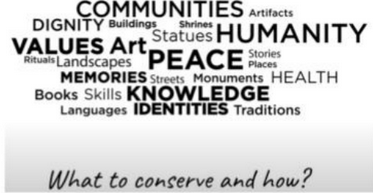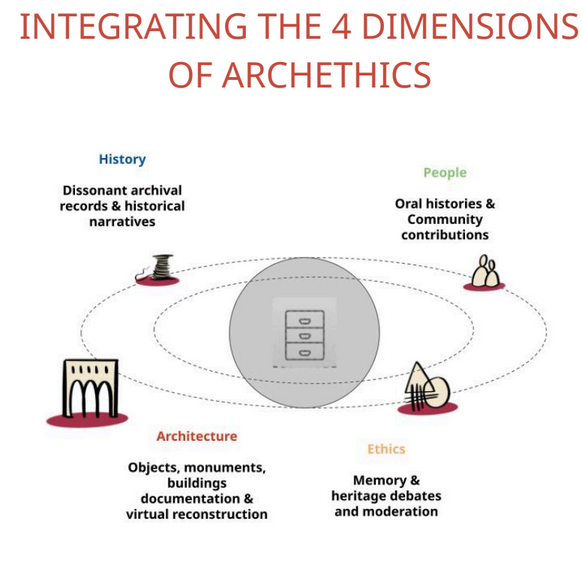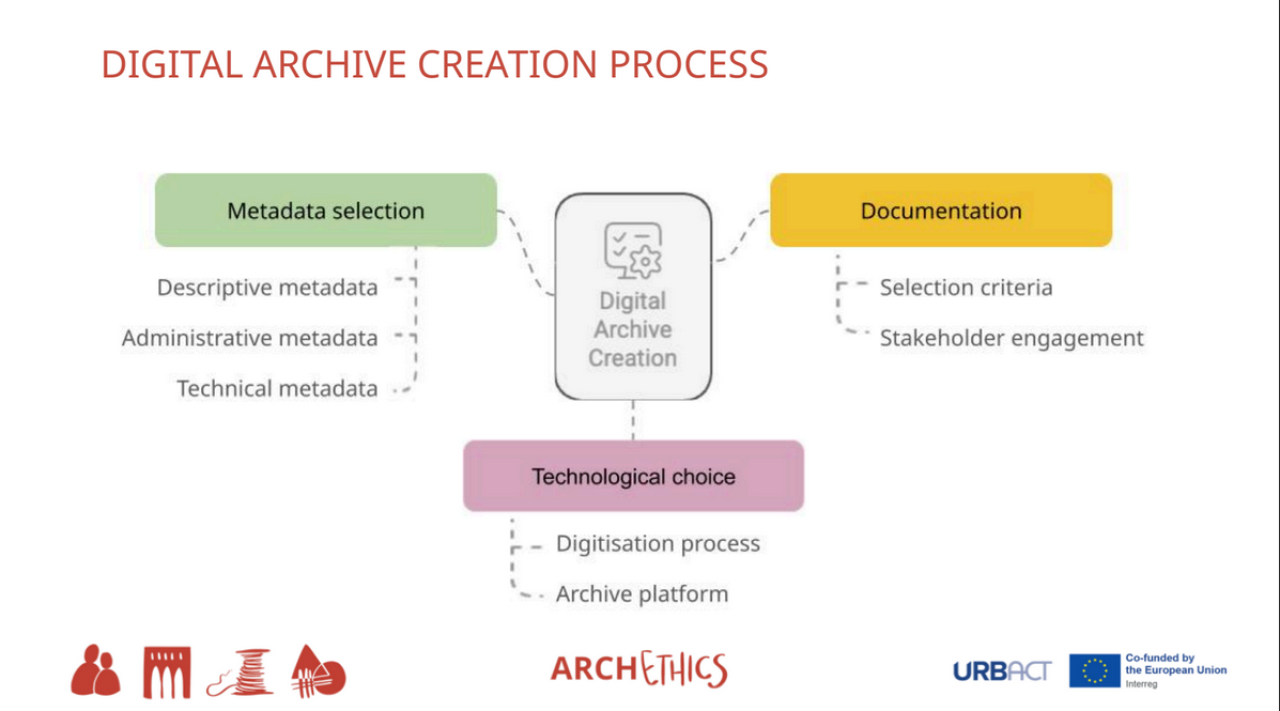
But what is a digital archive and why should ARCHETHICS need one?
A digital archive is a a collection of materials - such as documents, images, audio recordings, videos, that are stored and preserved electronically, and organised for long-term access, which can have different purposes and dimensions.
In this regard, the ARCHETICS project could benefit from creating one of its own. And, in particular, the objectives of a digital archive for Archetics could be:
- To preserve and document diverse heritage materials and narratives around dissonant heritage in the cities
- To foster dialogue, critical reflection, and education
- To ensure accessibility, inclusivity, and ethical representation
- To provide an interdisciplinary perspective linking dissonant heritage, societal impacts, ethical and architectural considerations
- To enbale a multi-perspective approach across time, dimensions, themes, etc. across the 4 Archethics dimensions

Guidelines for an Archethics digital archive
In order to build an effective tool, the archive should respond to the following principles:
- Open Access, the tool promotes the broad dissemination of cultural heritage, allowing
- all to engage with the resources.
- Accessibility, the tool has to be designed to be usable by as wide an audience as possible
- Integrity, the archive maintains the authenticity, accuracy, and trustworthiness of the materials and metadata.
- Interactivity, the archive encourages active user engagement, users are not just viewers but also participants
- Inter-disciplinarity, the archive supports and encourages contributions and usage from multiple fields of study in order to enrich the archive's interpretation
The process of the creation: Key elements of an Archethics digital archive
The creation of a digital archive should be follow some core steps and core choices that regard:
- The metadata selection, namely the backbone of the digital archive, it includes any information that describes what something is. They could be descriptive metadata, administrative metadata and technical metadata.
- The documentation, namely the selection of materials and the content. In this choice, one must consider about the copyright clearance, licencing and attribution, access restrictions, the digitisation process and the digitising methods, and the storage needs.
- The technological choice, that is, the creation of the physical platform, its characteristics, the requirements for its accessibility and the possibility of user contributions, such as the implementation of a moderation system and compliance with ethical principles.
A few more considerations for your digital archives:
- Engage a broad range of stakeholders in the development stage
- Address biases through co-design of interfaces, co-development of classifications of metadata, crowdsourcing, selection for digitisation.
- Promote digital literacy for all.
- Ensure transparency, include all information with their sources
- Rethink and reevaluate purposes and uses of digitisation, and the value of the non-digita in digital cultural heritage practices, think complementary!


